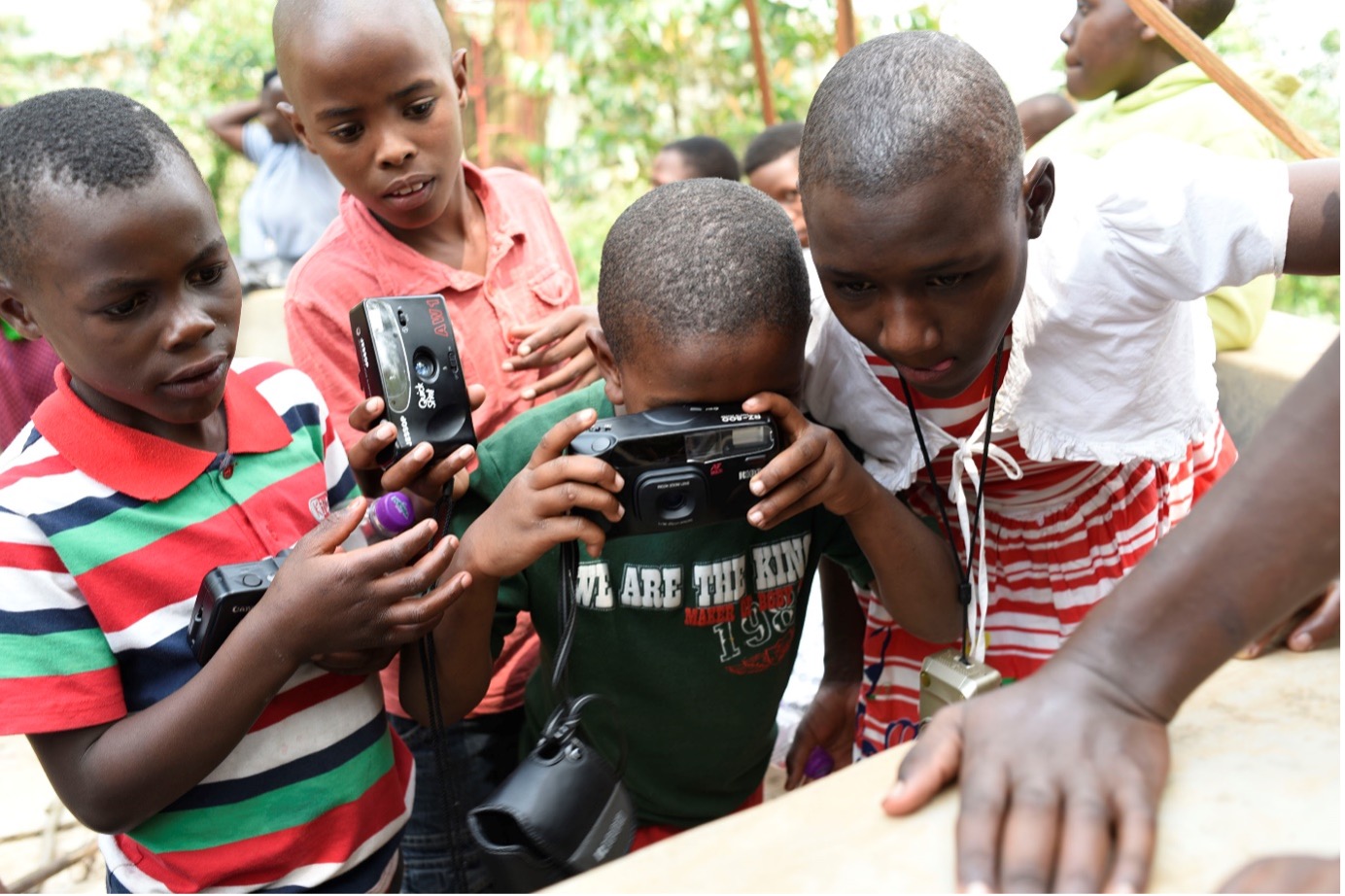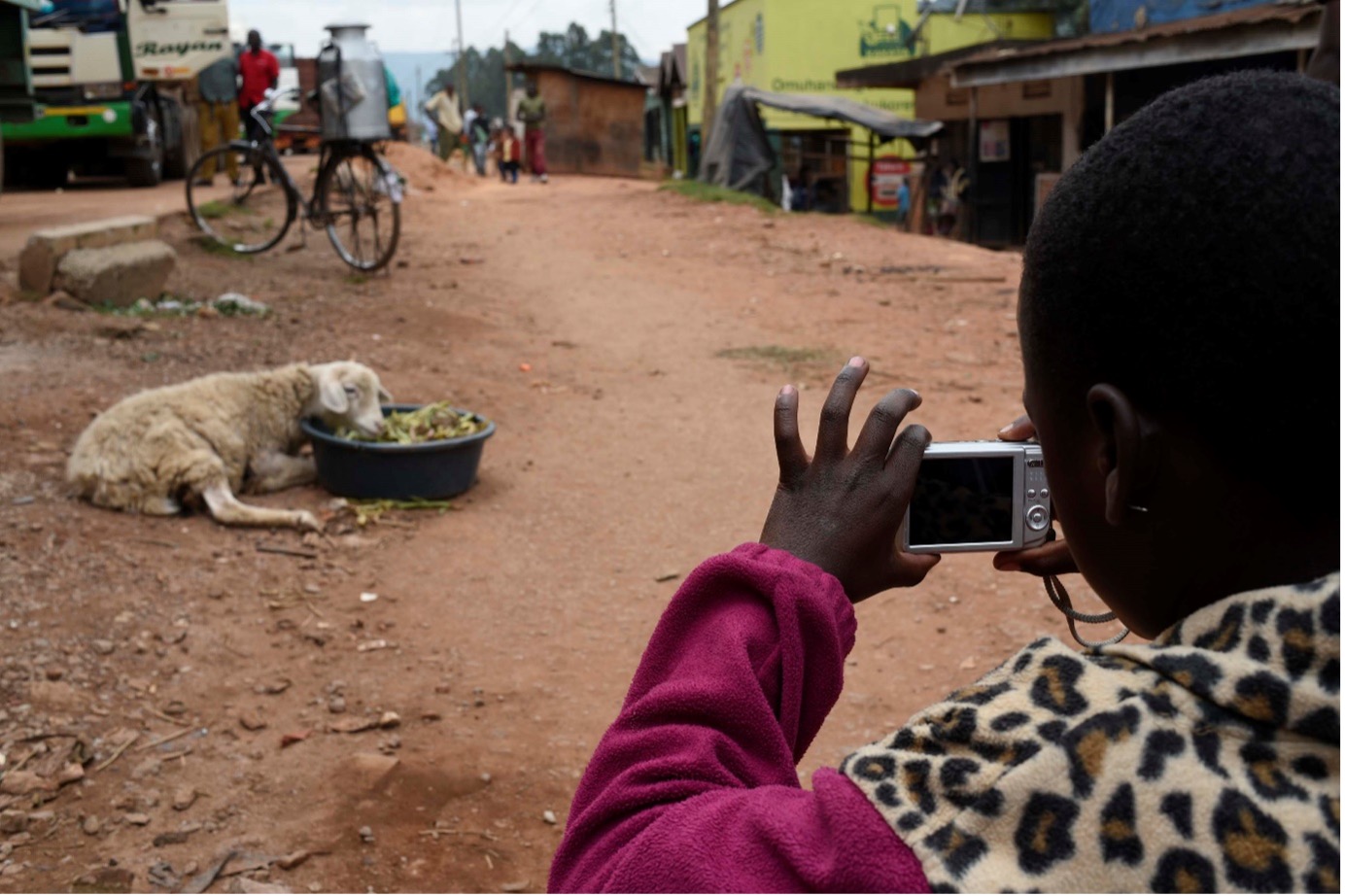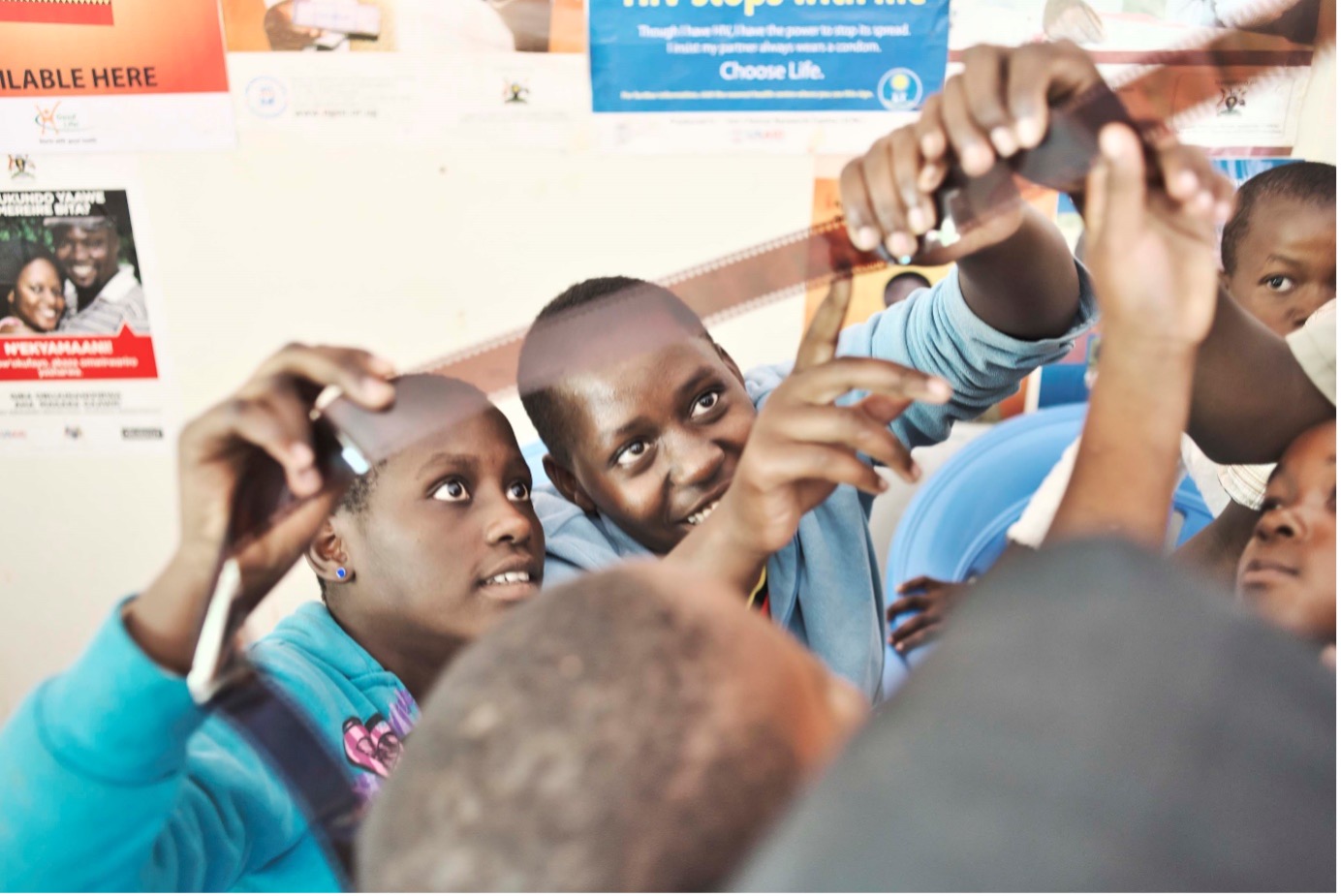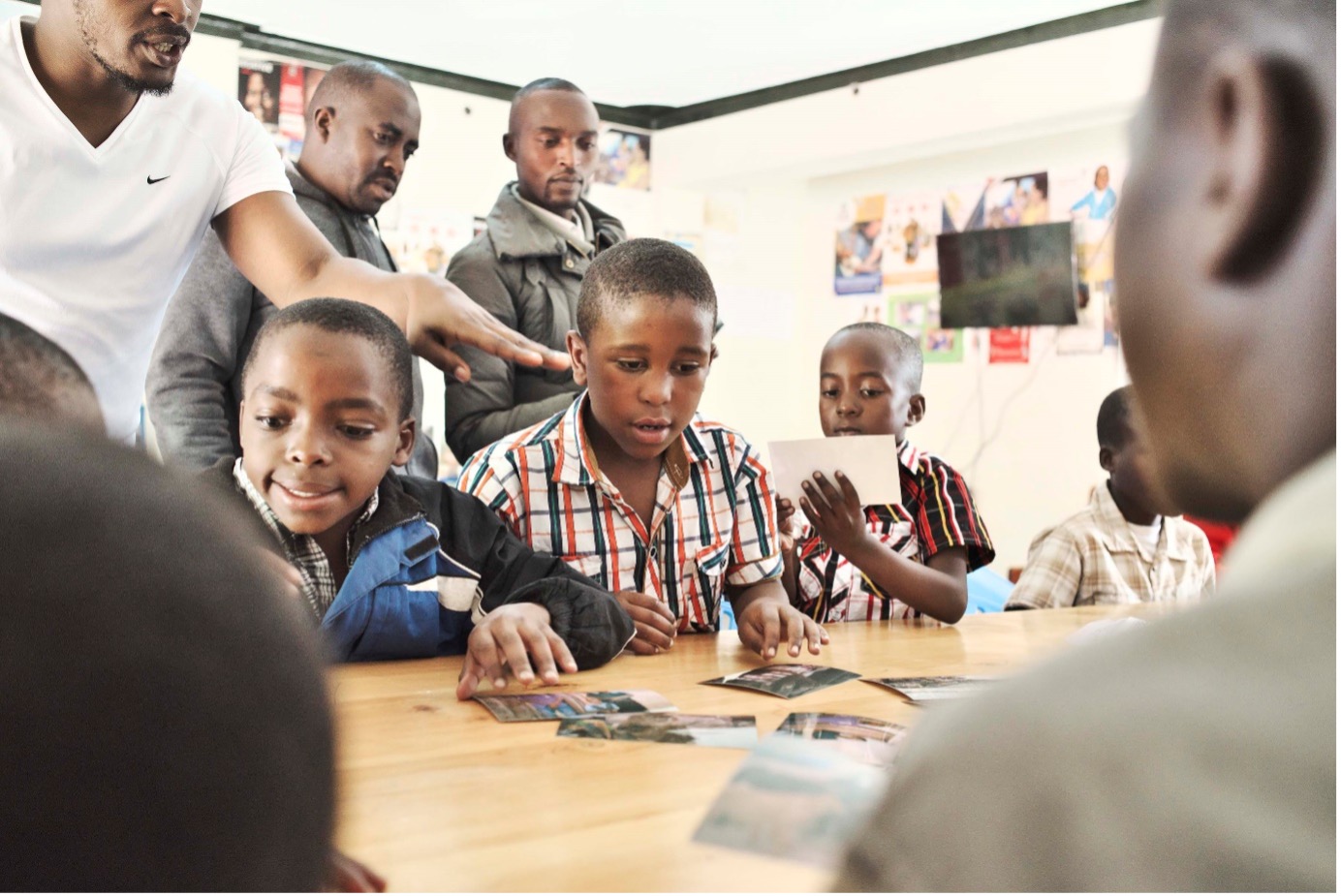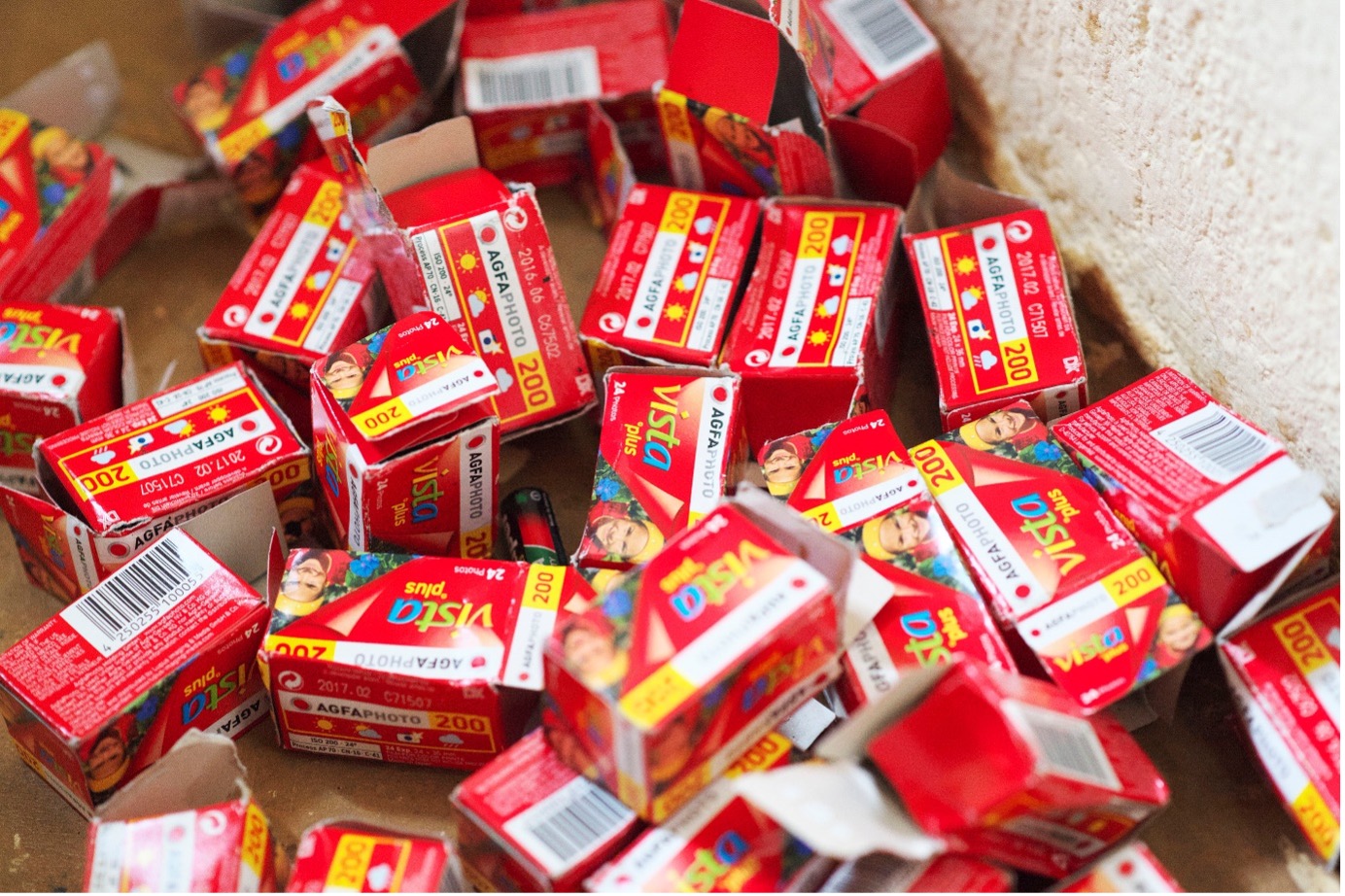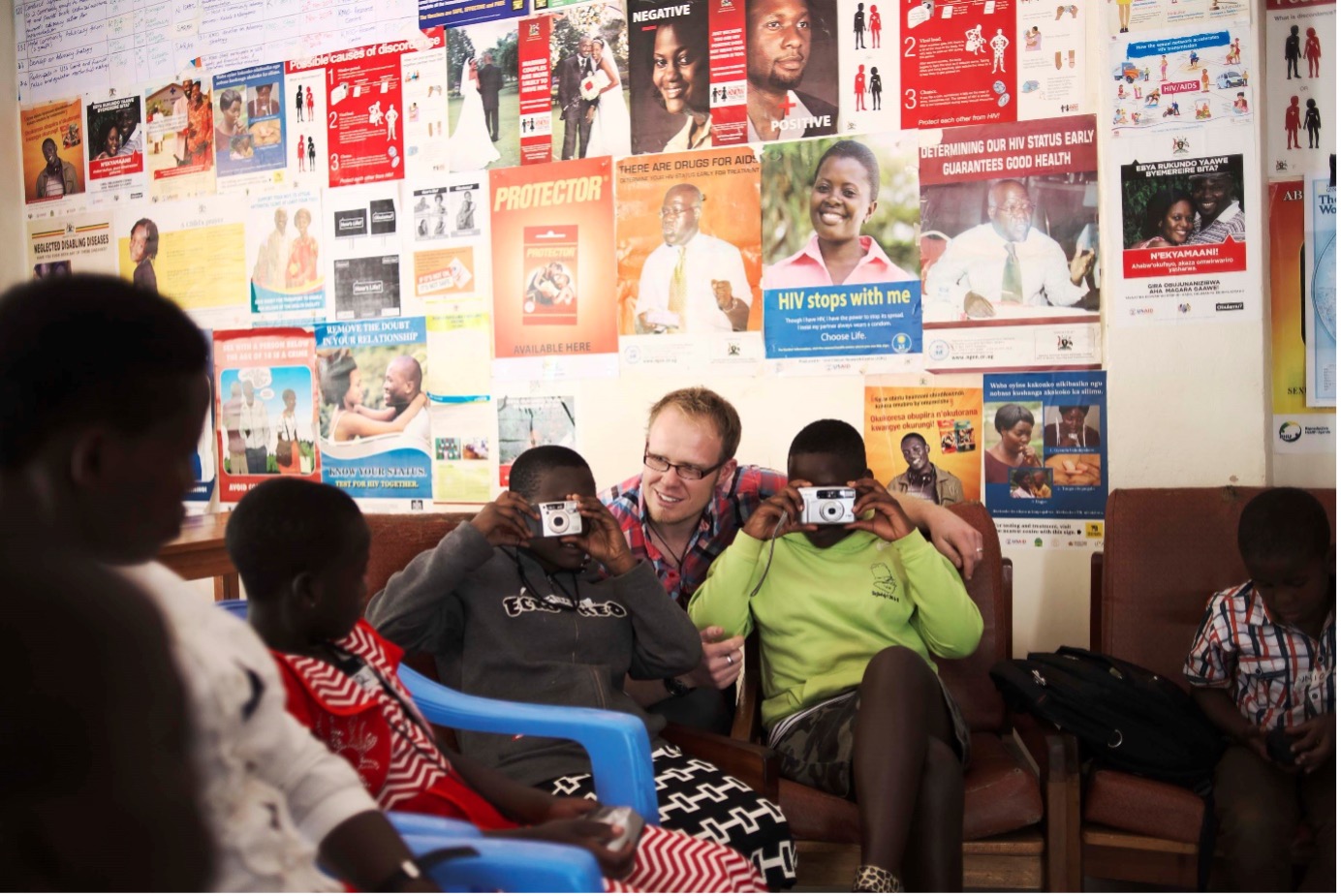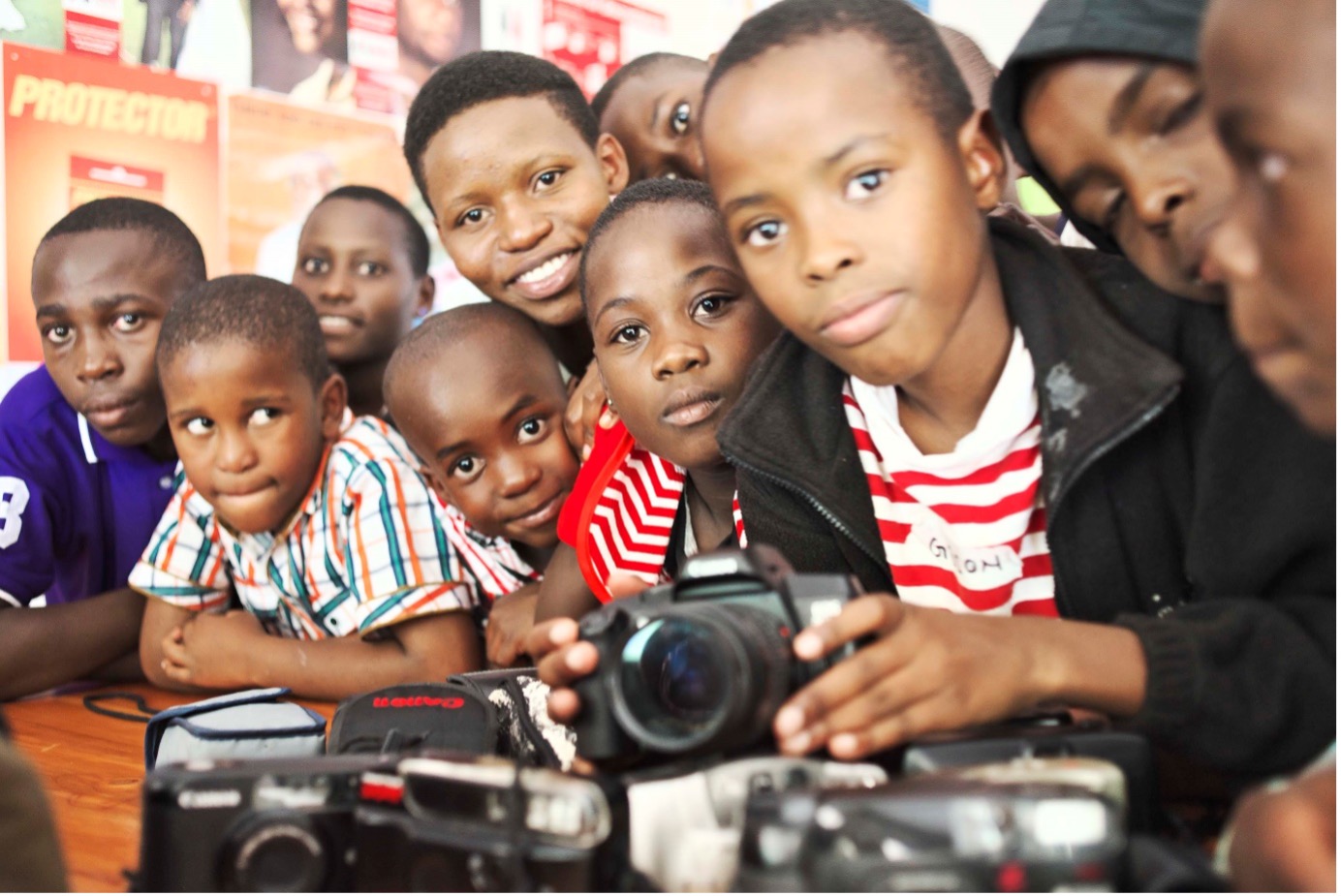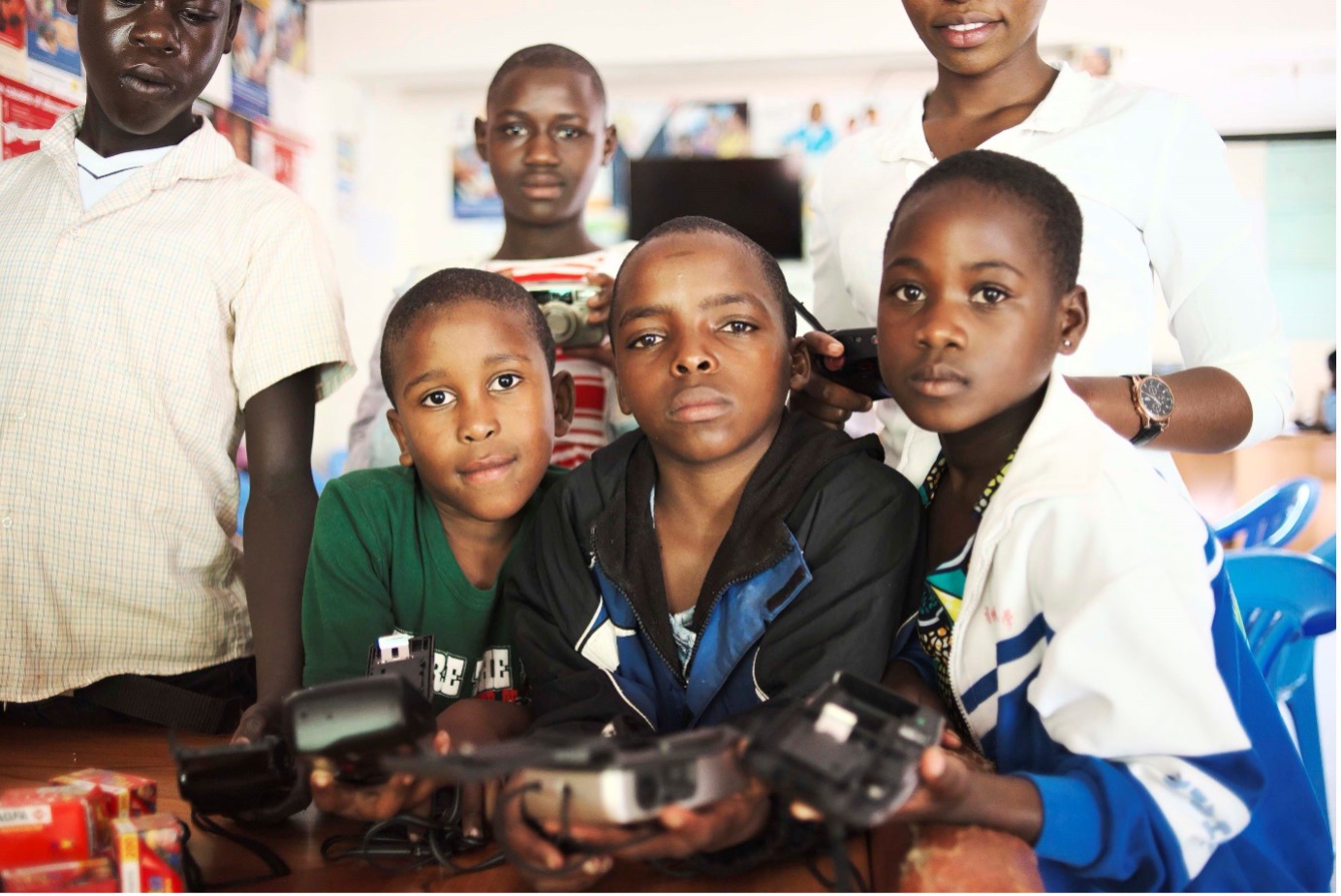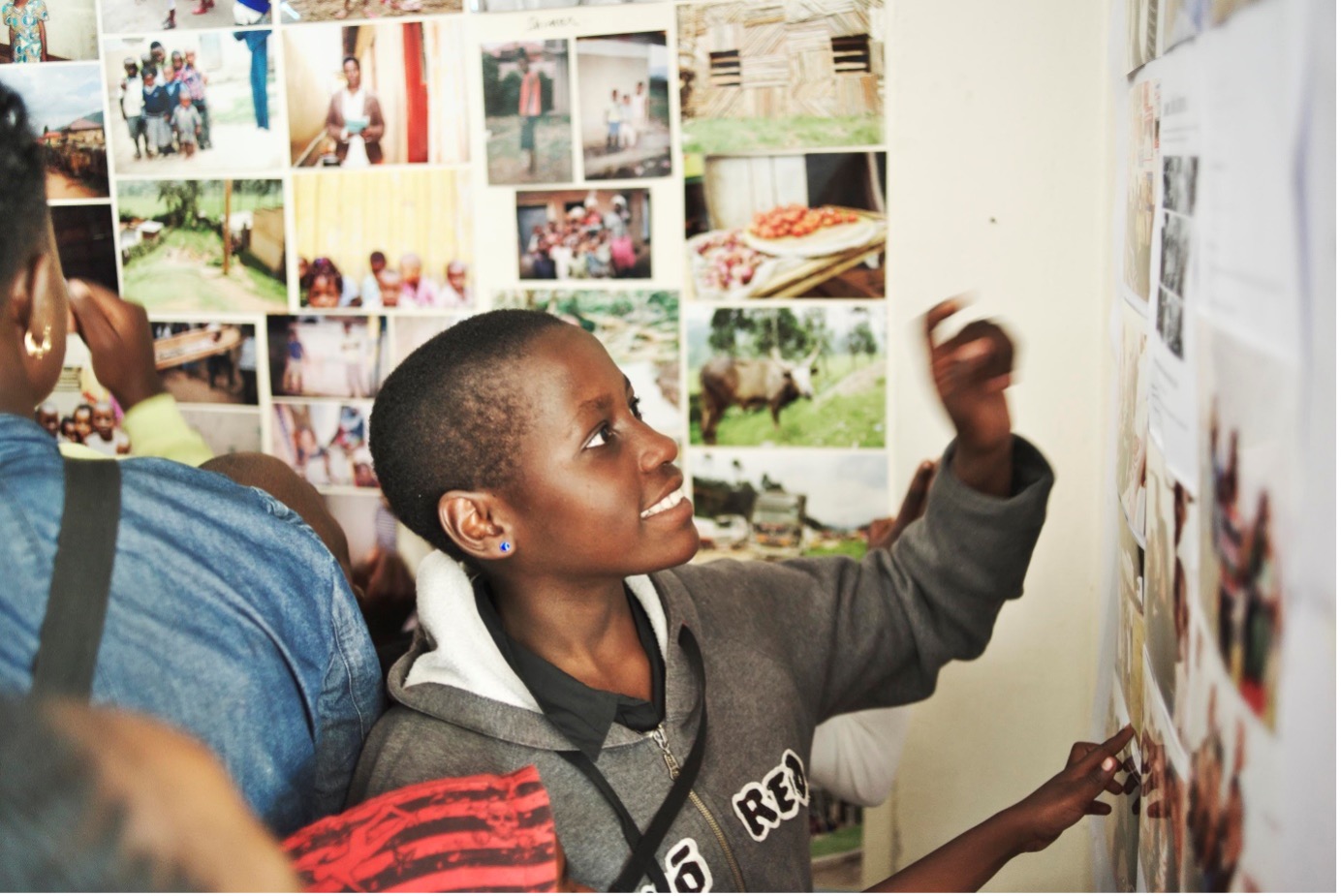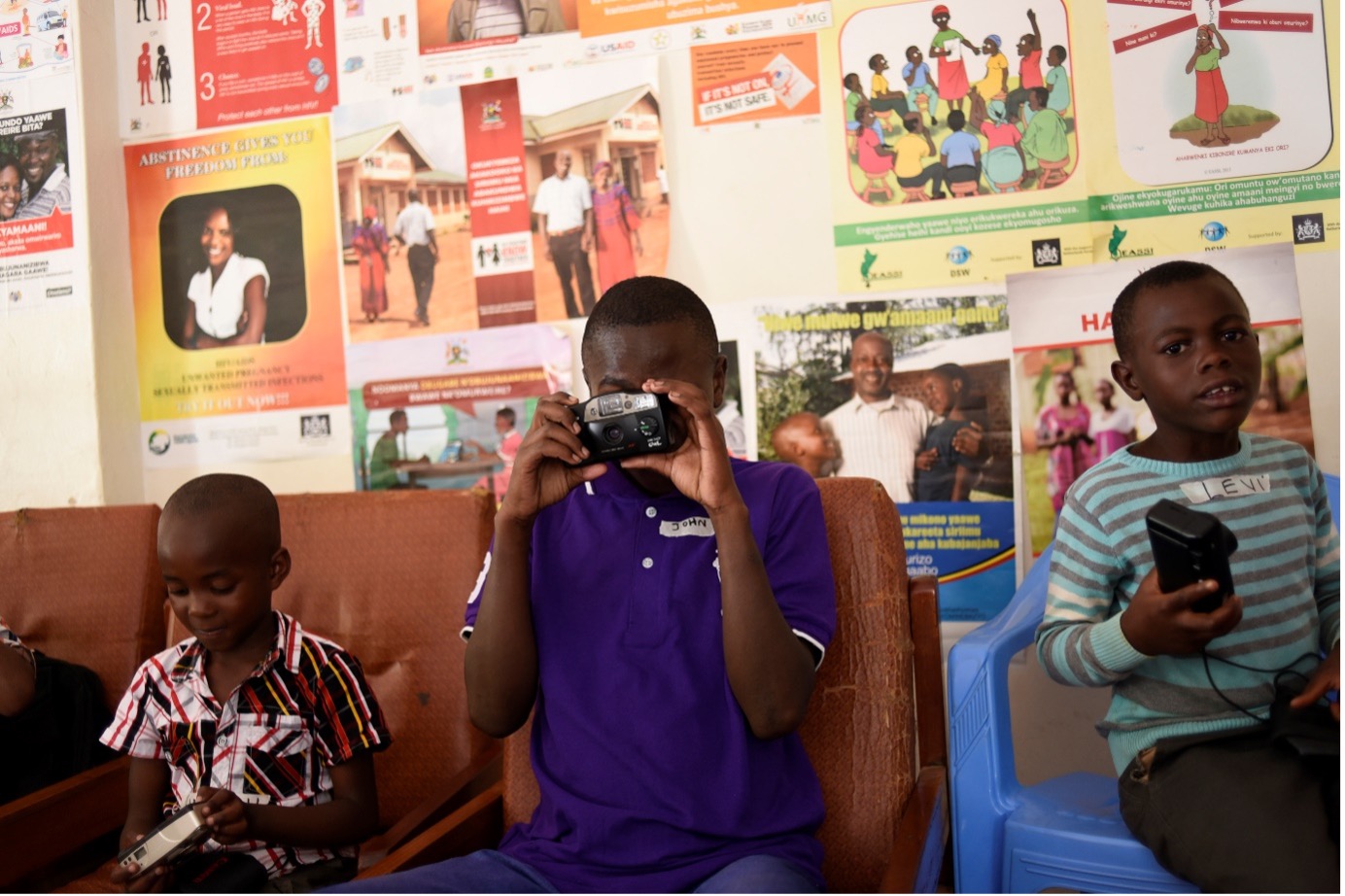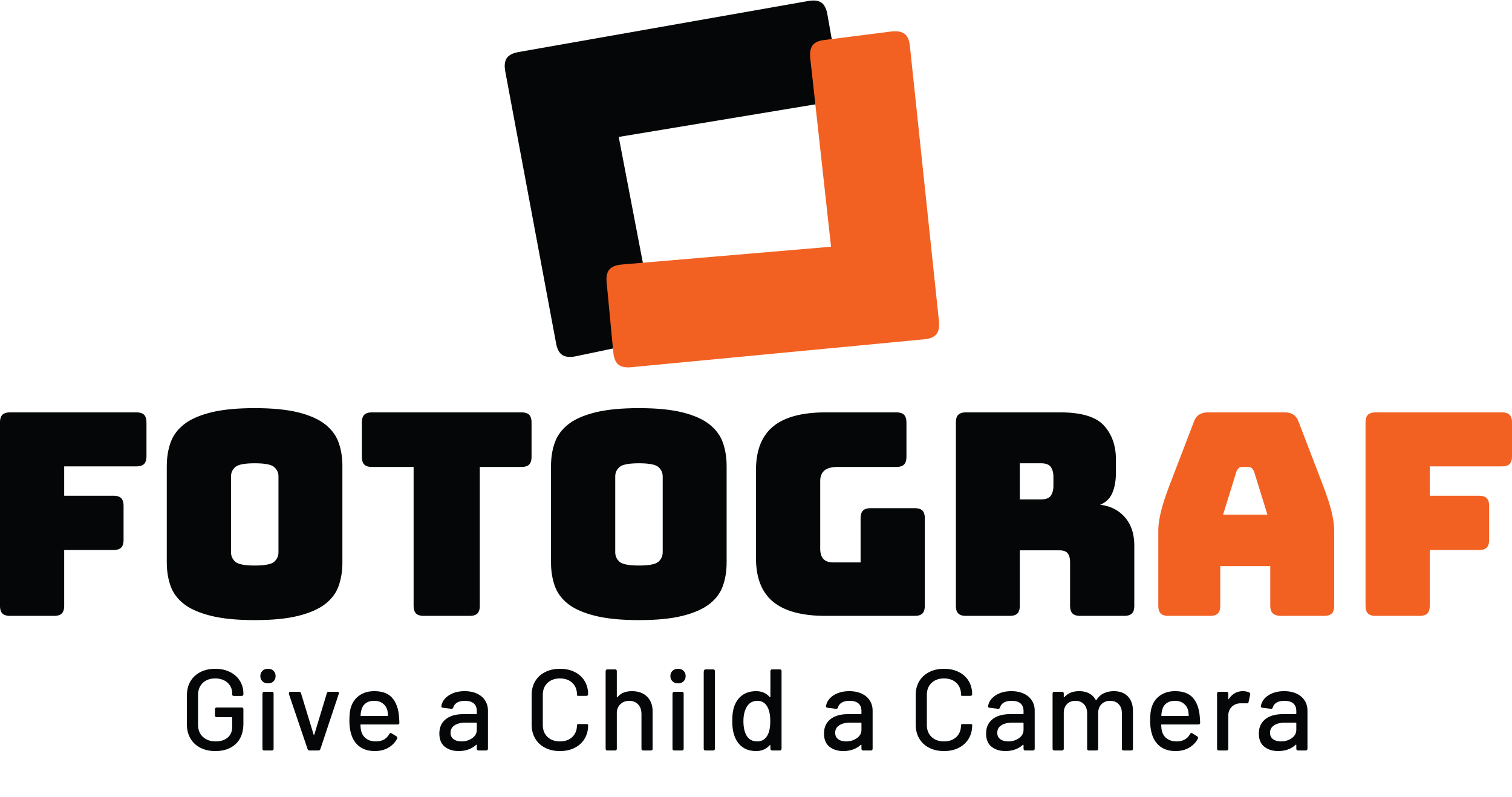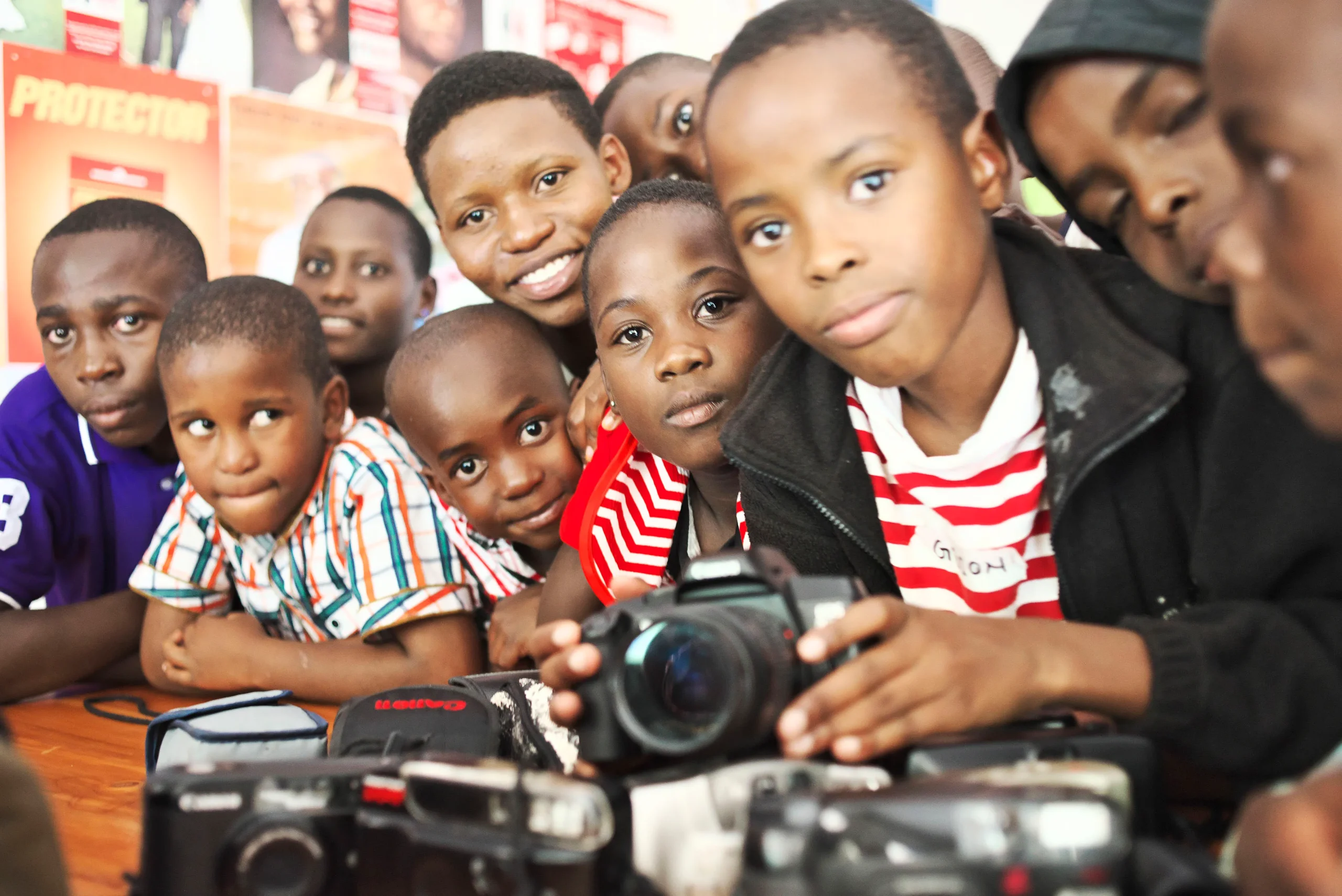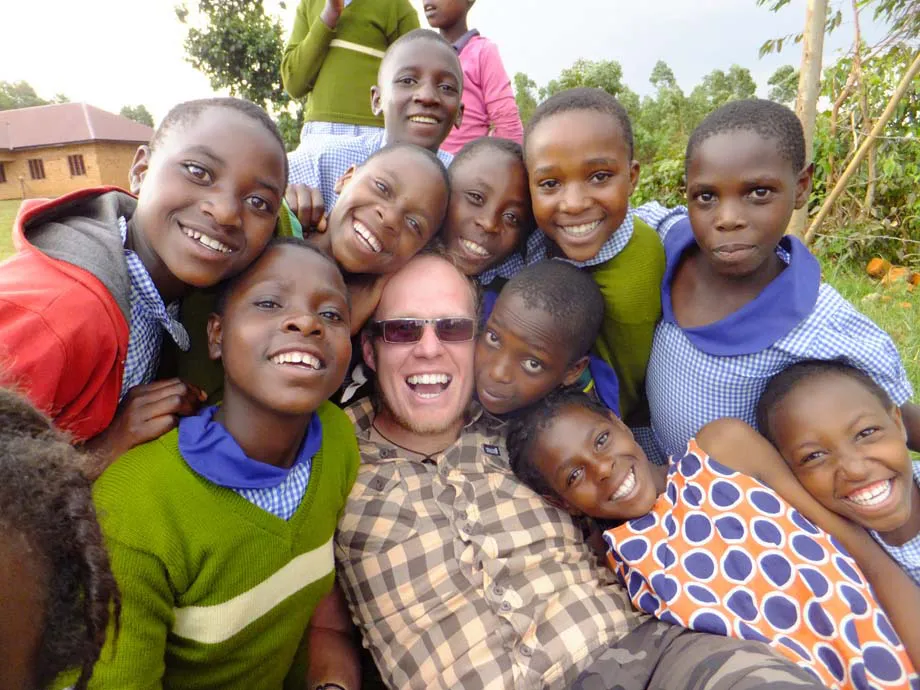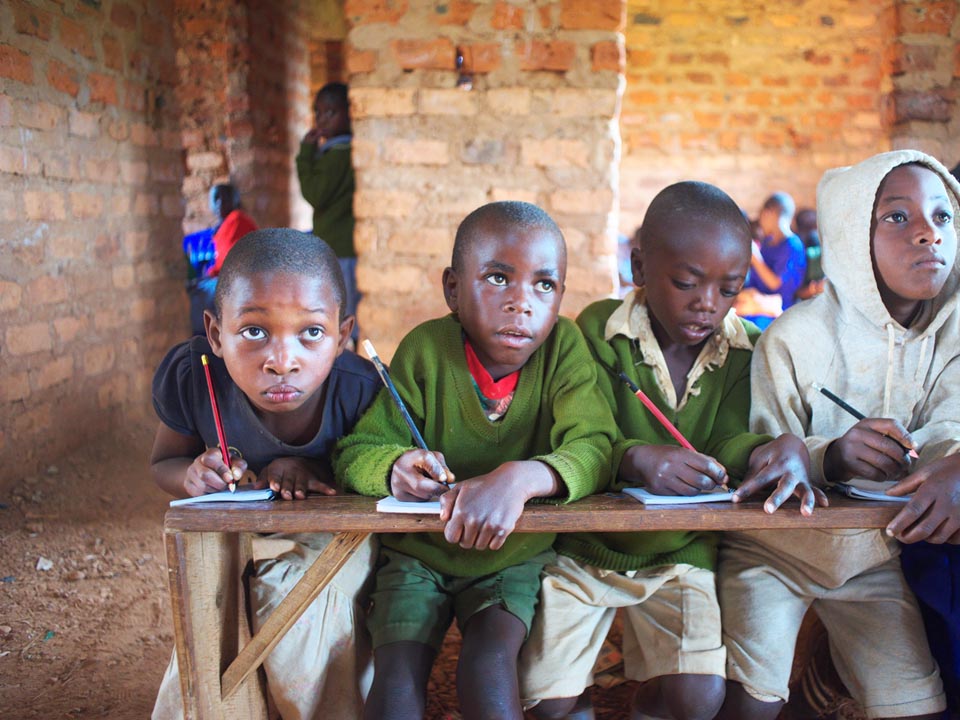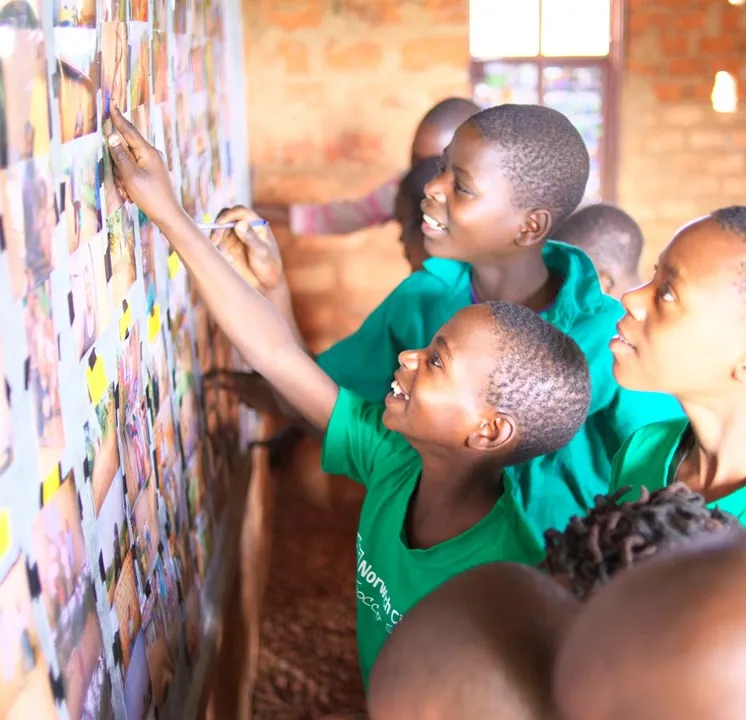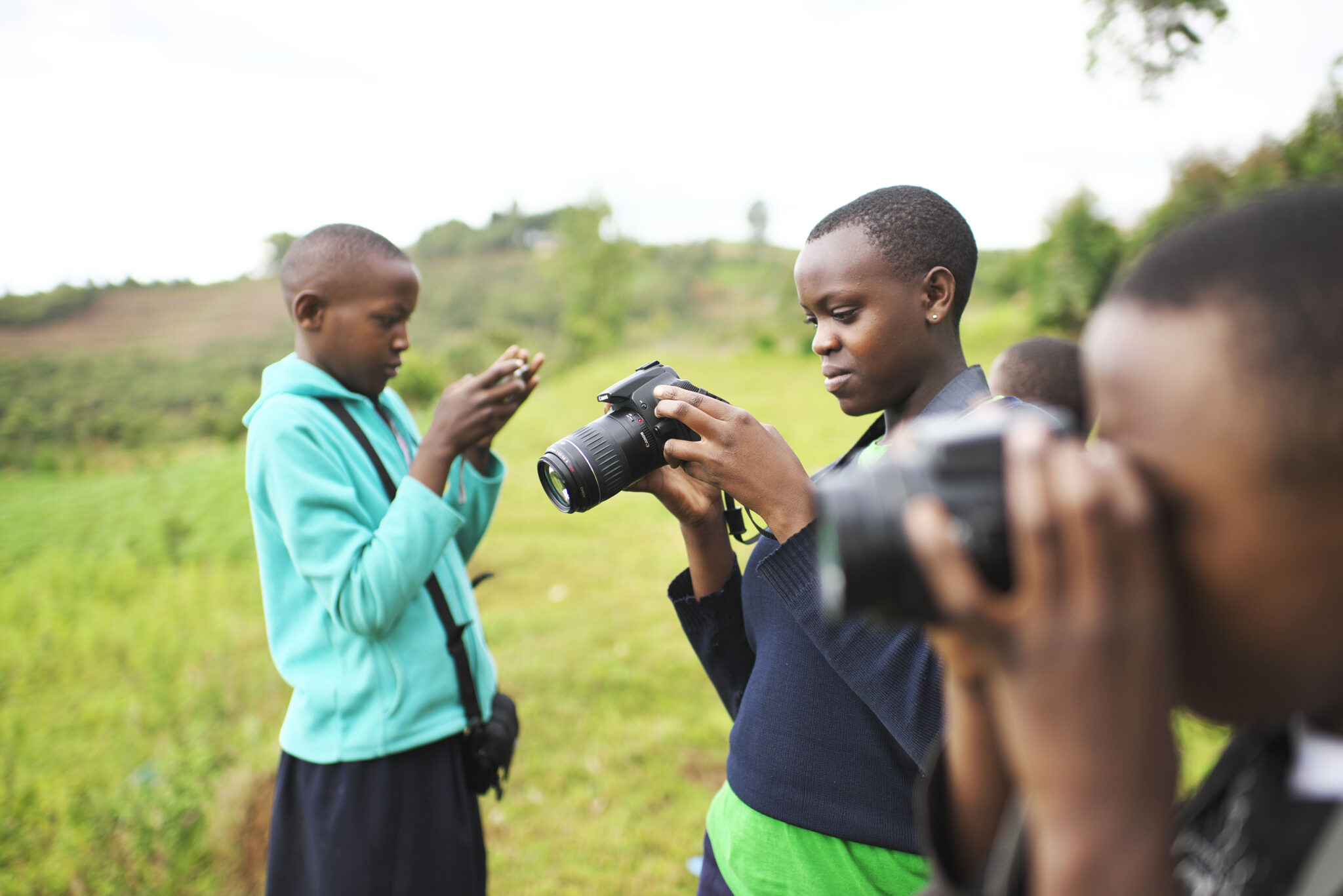This project was based in the border town of Katuna, in Southwest Uganda. A border which is shared with Rwanda.
For around 3 weeks Julian was based in the busy border town working with a group of young vulnerable children whose mothers are all known to the NGO who Julian partnered with, through their profession and/or their HIV status.
That first few mornings were really slow burners. The majority of these children come from tough urban backgrounds.
A considered and timely response was required. The sessions would turn out to be fun, interesting and at times tense, with the children talking about their experiences, family life, as well as hopes and dreams for the future.
The first few sessions of any project are mainly designed as a chance for the photography teacher to get to know the children, build a relationship and develop together. Sharing stories, experiences and showing photographs.
During the first few days, the sessions were punctured with stops for tea, bread and snacks. Eventually the time came to discuss in more detail photography, producing the 15 cameras, the children’s faces inevitably lit up at the prospect of using film and digital cameras.
Talking through the basics of photography and getting the kids to understand the principles of making images takes only a short time. The most important part of the projects is that the kids have fun, while still retaining a small amount of information about the facts.
Films loaded; the children were taken on a day out to a local waterfall. A chance for a change of scenery (most, if not all the children had never left their home area!) and more importantly a fun day out with lunch provided. A chance to use the cameras properly for the first time.
Over the coming days Julian met up with the children regularly, techniques were fine-tuned as well as looking at print photographic results that had returned from the labs.
The following week the children were taken on a photo walk, holding the cameras proudly (no mean feat in a border town!) and proceeded to photograph life around them – telling a story of their town.
It’s always interesting to watch the group flourish, they had their own ideas, inspirations and interpretations and began to experiment. Naturally, being a border town, there were few run-ins with drunk/drugged or abusive locals… some clearly didn’t appreciate the photography of their home town.
After further workshops and one on one sessions, the group came together – cameras all intact and with beaming smiles. Films removed and off to Kampala on the overnight bus to get the films and digital cards developed.
That Moment…the moment of opening the packet and finding glorious images – a view of African life coming to prominence, through the child’s eyes.
Hours, if not days, were spent sorting through the images. In between visiting families, visiting other health centres and learning about the work of MARPS and their dedicated staff.
The children are always encouraged to make their own judgements and final selection of images they would like enlarged and exhibited. Group discussions take place and it is always interesting to watch the interactions between the group, as packs of photos get passed around the tables, giggles ring around the room, youngsters pointing, shouting, smiling. It’s a rather special moment.
The final exhibition was organised at the border head office of MARPS. The photographers and their mothers/carers were invited, as is customary. The spread included tea, bananas, bread and milk.
The standard of photography was again particularly high. It genuinely seems to improve as the project develops. There are a few images which certainly stand out and are of a particularly high standard.
As well as leaving behind some of the equipment (with funding to enable development of images), the project also handed out some awards to the photographer who captured the best photograph, people’s choice and most improved photographer.
